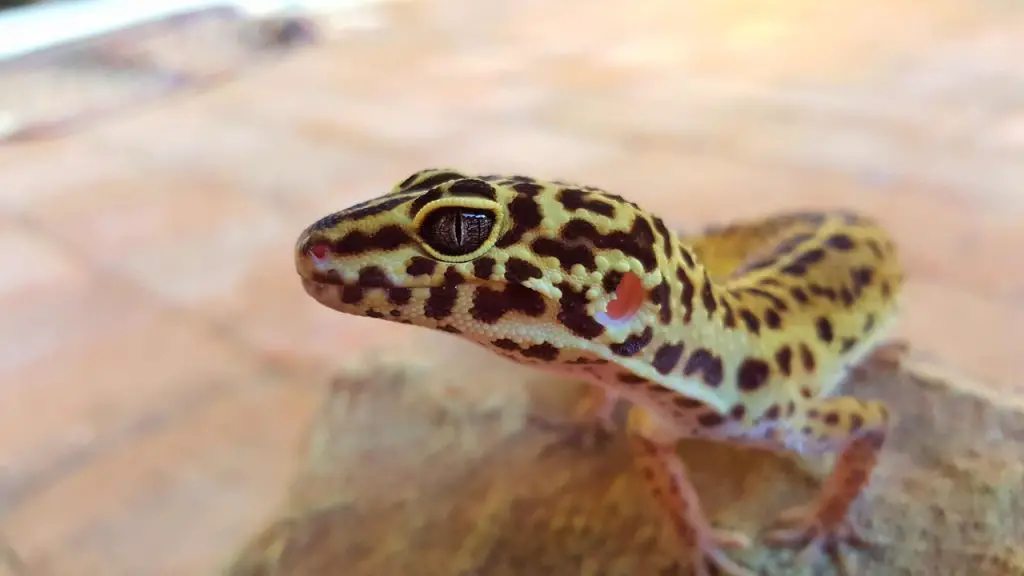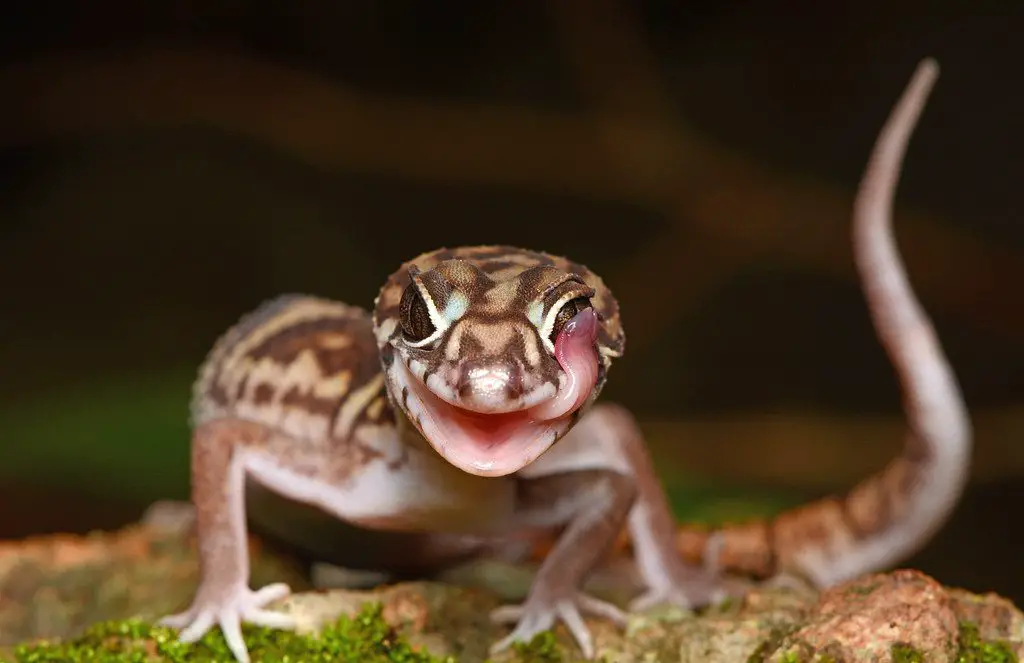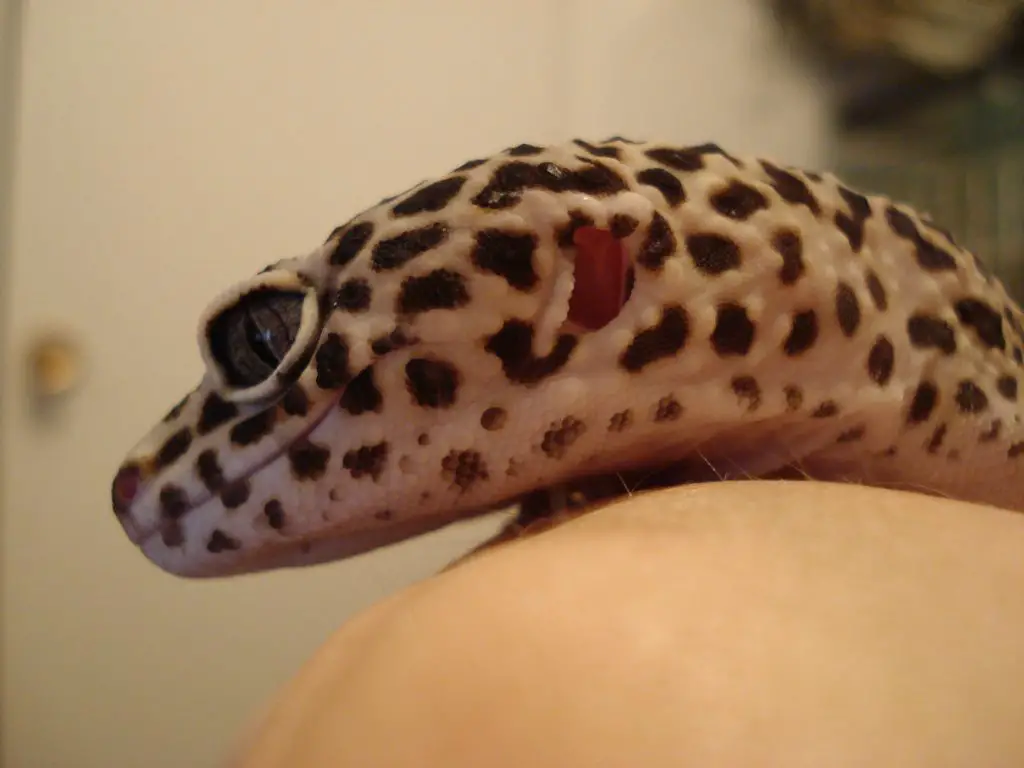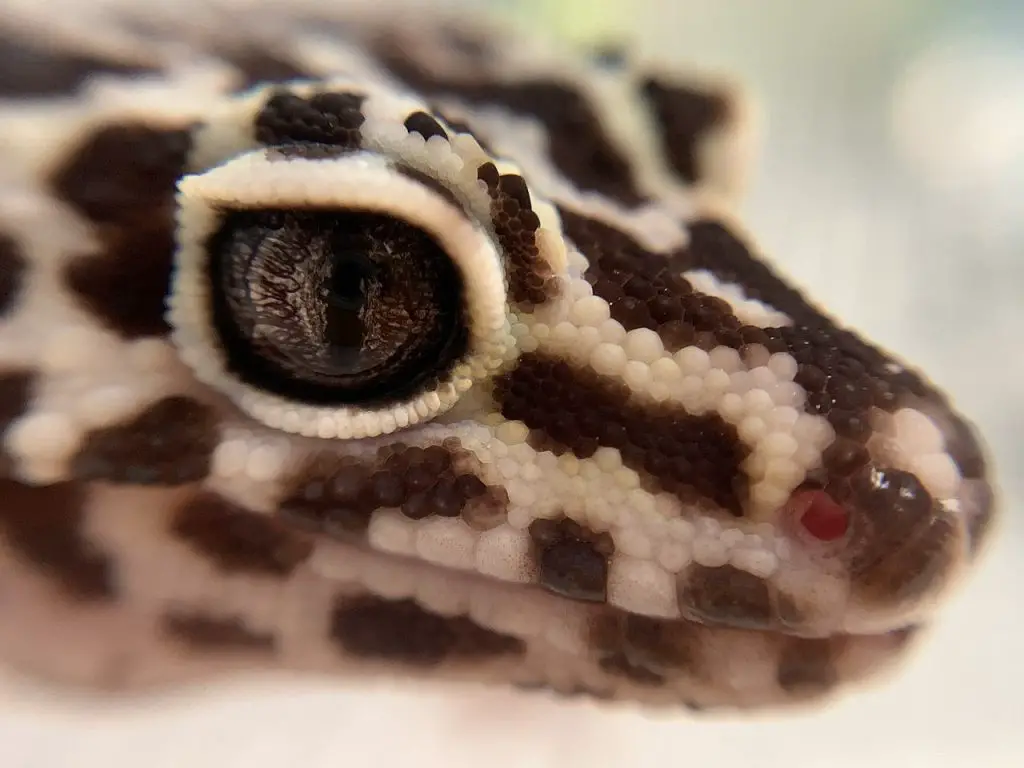Do you know what senses Leopard Geckos have? Most people don’t realize that these little creatures are incredibly sensitive to their surroundings.
In this blog post, we will discuss what they see, hear, smell, and taste. We will also talk about how they use their senses to interact with their environment.
If you are thinking about getting a leopard gecko as a pet, it is important to understand how they perceive the world around them!
Key Takeaway
- Leopard geckos possess the five basic senses – sight, smell, touch, taste, and hearing, with exceptional abilities in sight and hearing, and a keen sense of smell that aids them in hunting prey and avoiding predators.
- Leopard Geckos do have taste buds, which are tiny bumps called papillae located on their tongues, enabling them to taste their food.
- Leopard Geckos have good hearing, with their small ear canals and sensitive hearing mechanisms aiding in predator detection, prey hunting, and habitat safety assessments.
What Senses Do Leopard Geckos Have?

Leopard Geckos have a lot of senses. In fact, they have sight, smell, touch, taste, and hearing. Leopard geckos have great eyesight and can see in the dark.
They also have a keen sense of smell, which they use to find food. Their sense of touch is very sensitive, and they can feel the slightest vibrations. This helps them to avoid predators and find mates.
Leopard geckos also have a special tongue that they use to taste their food. Their tongues are covered in tiny bumps called papillae.
These bumps help the leopard gecko to identify what is edible and what is not. When a leopard gecko finds something it wants to eat, it will flick its tongue out very fast to taste it.
If the food is tasty, the leopard gecko will start eating! If not, it will move on in search of something else.
Leopard Geckos hear with their ears which are small and hidden beneath their scales. But despite their small size, they have three different parts that work together to help them hear very well. The first part is the eardrum, which vibrates when it comes in contact with sound waves.
The second part is the middle ear, which contains tiny bones that amplify sound vibrations. The third part is the inner ear, which contains fluid-filled chambers that help the leopard gecko sense the direction of the sound.
Leopard geckos are fascinating creatures with a lot of different senses that help them to survive in the wild. By understanding how these senses work, we can better appreciate the amazing abilities of these reptiles.
Do Leopard Geckos Have Taste Buds?

Yes. Leopard Geckos have tiny bumps on their tongues called papillae and most of them contain taste buds. In fact, Leopard Geckos have more taste buds than humans. Leopard Geckos use their sense of taste to identify food and avoid predators. Leopard Geckos also use their sense of taste to find mates.
When a Leopard Gecko tastes something, it sends information to the brain that helps the Gecko determine if the item is safe to eat or not. If the Gecko’s brain decides that the item is not safe, the Leopard Gecko will spit it out.
Leopard Geckos have a very keen sense of smell, and they use this to determine whether a food is safe for eating. If a lizard smells something that is poisonous, it will avoid it. Leopard Geckos also have a good sense of taste, and they will usually only eat something if it tastes good to them.
If a Gecko tries something that tastes bad, it will probably spit it out. Lastly, Geckos rely on their eyesight to help them find food that is safe to eat.
If a lizard sees something that looks dangerous, it will most likely stay away from it. All of these senses help Geckos determine which foods are safe for them to eat and which ones are not.
Do Leopard Geckos Smell With Their Tongue?
Yes. Leopard Geckos smell with their tongue. Leopard geckos have a very keen sense of smell. They use their tongue to smell their surroundings and pick up on the faintest of scents.
Their sense of smell is so acute that they can even detect other leopard geckos by scent alone. This ability to smell helps them to find food, avoid predators, and locate potential mates.
Leopard gecko tongues are long, sticky, and very sensitive. They use their tongue to catch prey and to help them climb. The tongue is also used to groom their scales and keep them clean.
The tongue is made out of muscle, mucous membranes, and tiny hairs called papillae. These papillae help the gecko stick to surfaces and taste their food. Leopard geckos can extend their tongue up to twice the length of their head!
Leopard geckos are amazing lizards with a lot of unique adaptations. Their tongues are just one of the many things that make them so special. If you’re ever lucky enough to see one in person, be sure to watch how it uses its tongue. You’ll be amazed at what this little lizard can do says Childhood Pets.
Do Leopard Geckos Have Good Hearing?

Leopard Geckos have good hearing, but not as good as some other animals. They can hear low-pitched sounds and vibrations, which helps them communicate with each other. Leopard Geckos also use their sense of hearing to avoid predators.
Leopard Geckos have some interesting adaptations when it comes to hearing. For one, they can move each of their ear openings independently. This allows them to zero in on the source of a sound more easily than if they only had one ear opening.
Leopard Geckos also have very sensitive skin around their ear openings. This helps them to hear even faint sounds. In fact, some Leopard Geckos can hear frequencies that are outside the range of human hearing!
All of these adaptations help Leopard Geckos to be very effective hunters and avoid becoming prey themselves. So the next time you see your Leopard Gecko sunning itself on a rock, take a moment to appreciate all the amazing things its ears can do!
Do Leopard Geckos Have Good Eyesight?

Yes, leopard geckos have very good eyesight. Their eyes are designed to help them see in low-light conditions and they can see quite well in the dark. They also have excellent depth perception and can judge distances quite accurately.
This is helpful for them when they are hunting prey or avoiding predators. Overall, leopard gecko eyesight is quite impressive!
Leopard gecko eyes are made of a special type of protein called opsin. Opsin is found in the retina, which is the light-sensitive layer of tissue at the back of the eye. The opsin proteins absorb light and change shape. This change in shape triggers a chemical reaction that sends a signal to the brain, telling it what we are seeing.
Different types of opsin proteins can absorb different colors of light. For example, one type of opsin protein absorbs blue light, while another type absorbs green light.
Leopard geckos have three types of color-sensitive opsins in their retinas: green-sensitive, blue-sensitive, and ultraviolet (UV) sensitive. This means that they can see a wide range of colors, including some colors that we cannot see.
One way to think about it is that leopard geckos have superpowers when it comes to their vision! Thanks to their opsins, they can see a world that is much more colorful than ours. So the next time you look at a leopard gecko, know that they are seeing a very different world than we are.
And who knows, maybe they are even secretly communicating with each other using colors that we cannot see!
FAQs
Q: How good is a leopard gecko’s eyesight?
A: Leopard geckos have excellent eyesight, especially during the night. They have a keen sense of depth perception and can detect movement from a distance.
Q: Can leopard geckos see colors?
A: Yes, leopard geckos have color vision. However, their color perception is not as vibrant as that of humans, and they may have difficulty discerning certain colors.
Q: What role does smell play in a leopard gecko’s life?
A: Smell is essential for leopard geckos as it helps them navigate their environment, find food, and locate potential mates. They have a highly developed sense of smell.
Q: How do leopard geckos use their sense of touch?
A: Leopard geckos have many touch receptors located on their skin. They use touch to explore their surroundings, detect vibrations, and communicate with other geckos.
Q: Can leopard geckos taste their food?
A: Yes, leopard geckos have taste buds on their tongues. They use their sense of taste to distinguish between different types of food and determine if something is safe to eat.
Q: Do leopard geckos have a sense of hearing?
A: Yes, leopard geckos have a sense of hearing. They can hear low-frequency sounds and vibrations, which are important for communication and locating prey.
Q: Can leopard geckos sense heat?
A: Leopard geckos have specialized organs called thermoreceptors that allow them to sense heat. These receptors help them regulate their body temperature and find warm areas for basking.
Q: How do leopard geckos communicate with each other?
A: Leopard geckos communicate through a combination of visual signals, body language, vocalizations, and scent marking. They use these methods to establish territory, attract mates, and communicate aggression or submission.
Q: Are leopard geckos sensitive to vibrations?
A: Yes, leopard geckos are highly sensitive to vibrations. They can pick up subtle vibrations in their environment, which helps them detect the presence of prey or potential predators.
Conclusion and final thoughts
In conclusion, leopard geckos have five senses, like many other animals. They have sight, smell, touch, hearing and taste.
This allows them to hunt for food, identify predators, and see in the dark. Leopard geckos are unique creatures that display fascinating behaviors because of their senses.




